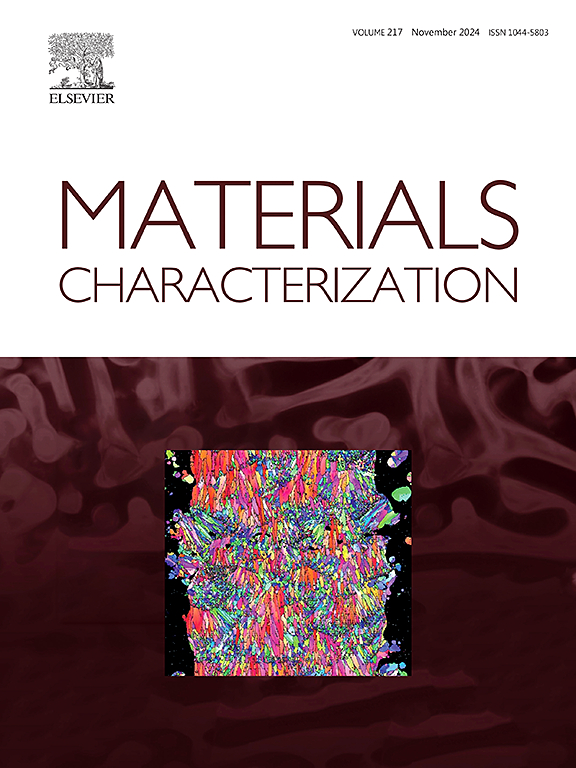Local substructure characterization of nanoindented additively manufactured Ti6242 alloy using STEM and EBSD
IF 4.8
2区 材料科学
Q1 MATERIALS SCIENCE, CHARACTERIZATION & TESTING
引用次数: 0
Abstract
Understanding the correlation between the local phase chemistry and local deformation behavior in response to the local plastic strain gradient under the indentation tip is crucial for optimizing the alloy performance in additive manufactured (AM) Ti alloys. This study investigates the nanoindentation response of Ti-6Al-2Sn-4Zr-2Mo (Ti6242) alloy fabricated via Laser Powder Bed Fusion (LPB) and Directed Energy Deposition (DED), focusing on phase chemistry, microstructural evolution, and their role in mechanical response. Advanced characterization using Scanning Transmission Electron Microscopy (STEM), Electron Backscatter Diffraction (EBSD), and Atom Probe Tomography (APT) reveals distinct substructural features governing the dynamic deformation response. The DED sample exhibits a combination of the unique dislocation substructure at the interphase boundary leading to faulted bands within the primary alpha. On the other hand, the presence of nanotwins, orthorhombic martensite phase and modulated lattice structure of the weakly textured beta phase controls the deformation in the LPB sample. It reduces the plastic strain gradient during nanoindentation in the LPB sample resulting in its insensitivity to the indentation size effect as opposed to the DED sample. Thus, the findings highlight the role of local phase heterogeneity in tailoring mechanical properties for high-performance application of AM Ti6242 alloy.
求助全文
约1分钟内获得全文
求助全文
来源期刊

Materials Characterization
工程技术-材料科学:表征与测试
CiteScore
7.60
自引率
8.50%
发文量
746
审稿时长
36 days
期刊介绍:
Materials Characterization features original articles and state-of-the-art reviews on theoretical and practical aspects of the structure and behaviour of materials.
The Journal focuses on all characterization techniques, including all forms of microscopy (light, electron, acoustic, etc.,) and analysis (especially microanalysis and surface analytical techniques). Developments in both this wide range of techniques and their application to the quantification of the microstructure of materials are essential facets of the Journal.
The Journal provides the Materials Scientist/Engineer with up-to-date information on many types of materials with an underlying theme of explaining the behavior of materials using novel approaches. Materials covered by the journal include:
Metals & Alloys
Ceramics
Nanomaterials
Biomedical materials
Optical materials
Composites
Natural Materials.
 求助内容:
求助内容: 应助结果提醒方式:
应助结果提醒方式:


